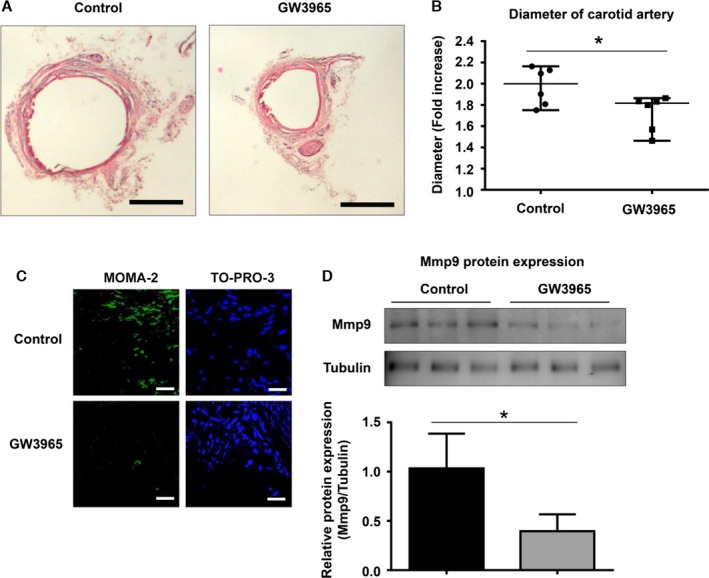Figure 5.

Nr1h (LXR) agonist suppresses CaPO 4‐induced murine aneurysm formation. Mouse model aneurysms were created by the CaPO 4‐induction method. The mice were divided into 2 groups: the control group (n=6) and the GW3965‐administration group (n=6). GW3965 (20 mg/kg), a synthetic nonsteroidal Nr1h (LXR) agonist, or vehicle (PBS) was intraperitoneally injected into mice every day. After 2 weeks, the mice were sacrificed, and the carotid arteries were collected after perfusing with PBS. A, Representative images of mouse CaPO 4‐induced aneurysms with hematoxylin and eosin staining are shown. Scale bar, 400 μm. B, The fold increase in arterial diameter after 2 weeks was calculated based on the maximum diameter of the artery at the time of the initial surgery and sacrifice. C, Representative immunohistochemical images for MOMA‐2 and TO‐PRO‐3 in carotid arteries. D, Representative Western blot and densitometoric analysis of Mmp9 expression in isolated carotids. Values are presented as mean±SD for 3 replicates; *P<0.05. Relative expression levels for Western blotting were quantified using the ImageJ program (National Institutes of Health). CaPO 4 indicates calcium phosphate; LXR, liver X receptor; Mmp9, matrix metalloproteinase 9.
